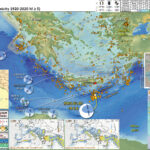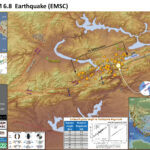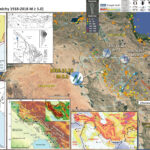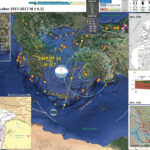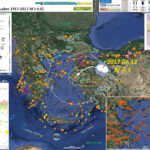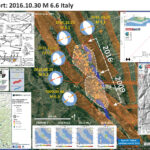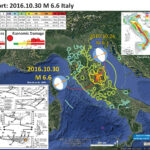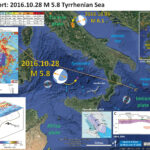Yesterday as I was signing into work, my colleague Jackie Bott (a seismologist, seismic hazard/geology mapper, and on my tsunami team at CGS) mentioned the outer rise earthquake offshore of Chile that caused a small tsunami. https://earthquake.usgs.gov/earthquakes/eventpage/us6000d3i9/executive I checked this…
Earthquake Report: M 6.5 in Crete, Greece
Well, last weekend I was working on a house, so did not have the time to write this up until now. (2023 update: the magnitude is now M 6.5) https://earthquake.usgs.gov/earthquakes/eventpage/us700098qd/executive The eastern Mediterranean Sea region is dominated by plate tectonics…
Earthquake Report: East Anatolia fault zone
This M 6.7 earthquake was the result of slip probably along a left-lateral strike-slip fault associated with the East Anatolia fault zone (EAF). The event was shallow and produced strong ground shaking in the region. https://earthquake.usgs.gov/earthquakes/eventpage/us60007ewc/executive As I write this,…
Earthquake Report: Iran
This morning (my time) there was a possibly shallow earthquake in western Iran with a magnitude of M = 6.3. This earthquake occurred in the aftershock zone of the 2017.11.12 M 7.3 earthquake. Here is my report for the M…
Earthquake Report: Turkey
We just had a good shaker in western Turkey. At the moment, there are over 400 reports of ground shaking to the USGS “Did you Feel It?” web page. The USGS PAGER report estimates that there may be some casualties…
Earthquake Report: Turkey!
We had a couple of earthquakes in western Turkey today (in the Aegean Sea offshore of the Island of Lesbos, part of Greece). The M 6.3 earthquake shows evidence for extension (normal fault), based on the moment tensor (read below).…
Earthquake Report: Italy Update #1!
Here is an update to the #EarthquakeReport for the M 6.6 earthquake that hit Italy early this morning my time. Ironically, I was preparing a report for earthquakes in the western Pacific for my class when this M 6.6 earthquake…
Earthquake Report: Italy!
There was just another earthquake in Italy. This one is a larger magnitude M = 6.6. This region has been especially seismically active since August 2016. Here are the USGS websites and Earthquake reports for this region of Italy. 2016.08.23…
Earthquake Report: Tyrrhenian Sea!
There was just a very deep earthquake along a small subduction zone in the Mediterranean Sea. This subduction zone is formed along the southern coast of Italy where the Ionian plate subducts to the north. This subduction zone is part…
Earthquake Report: Italy
Italy continues to shake following the Armatrice Earthquake series in August 2016. Here is my report for that series of earthquakes. Today’s earthquakes occurred along the northern end of the earthquakes that happened a few months ago. Today’s series started…


